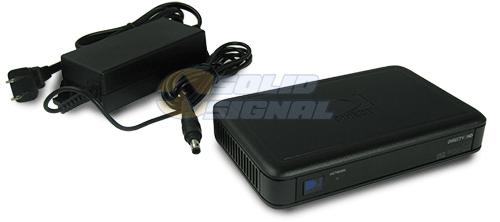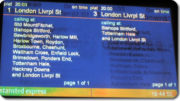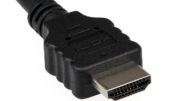In a recent article, a reader took me to task. They said that Genie Mini Clients haven’t changed in a very long time. They’re right, in a certain sense. The basic technology hasn’t changed at all in almost a decade. While the 4K Genie client was released in 2015, that’s still an eternity ago if you look at computers or phones or other evolving tech. The HD client hasn’t changed much since 2012, and that’s an incredibly long time if you consider it. So, let’s take a deeper look at why Genie clients haven’t evolved, and what that’s not such a bad thing.
A look back at the wired HD client…

I wrote this review of the C31 Genie Mini Client in 2012. Pretty much everything about this review still applies to the most current version, the C61 R2. The size of the box is the same, the functions are the same, and the performance and reliability are the same.
What’s changed, you ask? The newest client uses the AT&T globe logo, of course, and the Genie remote which was released in 2013. The newest client boxes support a newer version of the MoCA technology that underpins all clients, but it’s not really used in DIRECTV systems anyway. See below for more information.
…the wireless client…

In late 2013, we saw the first wireless client from DIRECTV. You can read my review here. Today’s C61W client is a dead ringer for this older model, with the exception of course of the globe logo. The functions are the same as well. From the client side, nothing’s changed. The wireless technology from those days is still rock solid and now it’s built into the Genie 2 DVR so you don’t need a different box.
…and the 4K client

The C61K client has changed least of all, because it’s the newest. Again, newer versions sport the new logo and button setup but that’s it. This client is larger and uses more power than the HD clients, so you could see perhaps some room for improvement. But, until recently there’s been little growth in 4K. So, the existing stock of clients has been enough to support the demand. I’m not sure if a new version of the C61K is planned, but I could see where improvements in efficiency could lead to a smaller and easier-to-manufacture client.
So why haven’t these things changed in, like, forever?
In order to understand the reasoning here, you have to understand the magic behind the question. AT&T (and DIRECTV before it) always wanted you to think of these little boxes as receivers. But, they aren’t. If anything they’re adapters and that’s it. You wouldn’t think there would be an improvement to a USB dongle and in essence that’s what these things are.
The entire idea of a client box is that the server box does as much of the work as possible. Here’s all that really happens:
- The client box receives commands from the remote and sends them to the server.
- The client box also receives network data from the server.
- When the data is received, the client box decodes this data and turns it into video and audio.
Literally that’s it. The 4K client has to work harder because it can decode 4K in real time. That’s why it’s bigger.
In order to give people a familiar experience, these devices look like little receivers, but they just act like simple adapters. They could look like adapters as well if AT&T wanted them to.
Updated: Let’s talk about MoCA
I’ve been asked to make it clear that DIRECTV’s Genie clients do use a flavor of MoCA, the technology that allows networking information be transferred over coax cable. DIRECTV’s implementation is different from that of almost every other provider. Most of DIRECTV’s clients are based on the first generation of MoCA, which allows only a total of 16 devices at a time. Genie 2, C61 (HD) and C61 Wireless use a newer version of MoCA that supports higher speeds and more devices, but this doesn’t change the way Genies operate.
A next-generation client?
A next-generation client could look like a Chromecast or something similar. But that would create one problem. These boxes are still designed to take infrared commands from universal remotes. They could be a little smaller, but they do need to be able to be seen by a remote. You could have a wire that connected to an IR target on the TV, but that’s not super attractive either.
So there’s the bottom line. There’s nothing really wrong with the current clients, and they’re already acceptably small, so why mess with success? Newer chips aren’t going to improve their speed, which has more to do with the distance and cabling between the server and client. Newer clients won’t add functionality necessarily. Oh it would be nice to be able to hook up Bluetooth headphones I suppose but that’s becoming a more common feature in TVs anyway.
So if it ain’t broke, why fix it? In fact, why not shop at Solid Signal now and get another client for your home?




